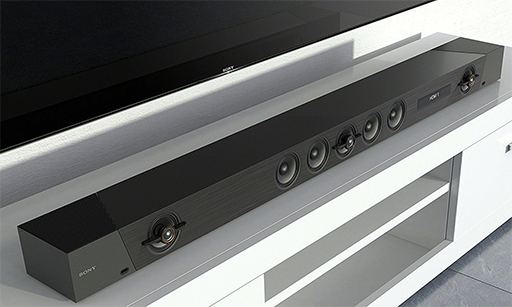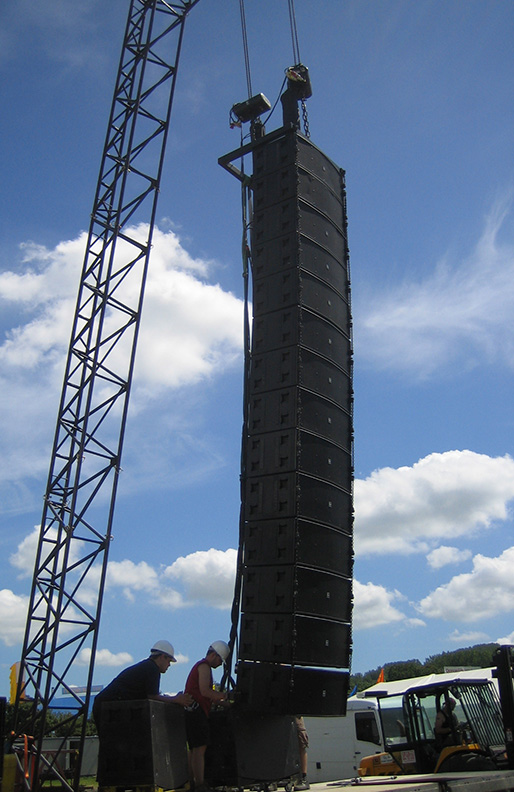What happens when we increase the number of slits in Young’s experiment? In that case we create something called a diffraction grating. Again, we can think of the diffraction grating as being the same as a set of sound sources which are all coherent with each other. We now have a case where there are many more than just two sources interfering. The simulation below shows the sound field generated by a set of sources. Do we just get a chaotic mess? Are there still quiet and loud patches – Young’s fringes?
We don’t just end up with a chaotic mess – because the sound sources are coherent. So we still get loud spots where the sound from the slits arrives in-phase, and quiet spots where the sound from the slits cancels due to destructive interference. In the diagram below some of the lines of destructive interference have been marked. Between those you get constructive interference and a louder sound. As with Young’s double slits, the directions of the fringes can be calculated.


In acoustics, a common example of many sources side-by-side is a soundbar. These are a set of loudspeakers side-by-side. Here the designer makes use of the interference pattern to ensure that sound beams towards the people sat on the couch in front of the TV. Less sound is sent to the sides, reducing reflections from the room and so helping the TV sound to be clearer.

In large PA systems for outdoor gigs, a similar arrangement is popular. Modular speaker boxes are sat one on top of another in a tall pile, or hung from a suspending gantry. This is called a line array, and follows the same idea. The sound is directed broadly in the plane of the audience’s heads – but forms a tight beam in the vertical plane. This means that if the line array is angled slightly towards the ground, the audience can enjoy high-volume music – but that the spread of this music to surrounding houses etc is controlled by the line array directivity. Trying to control noise pollution is one of the major problems you have to overcome if you want to run a music festival. Unless you can persuade your audience to travel somewhere really remote, you risk annoying the neighbours, and without proper acoustic design that can get you shut down!